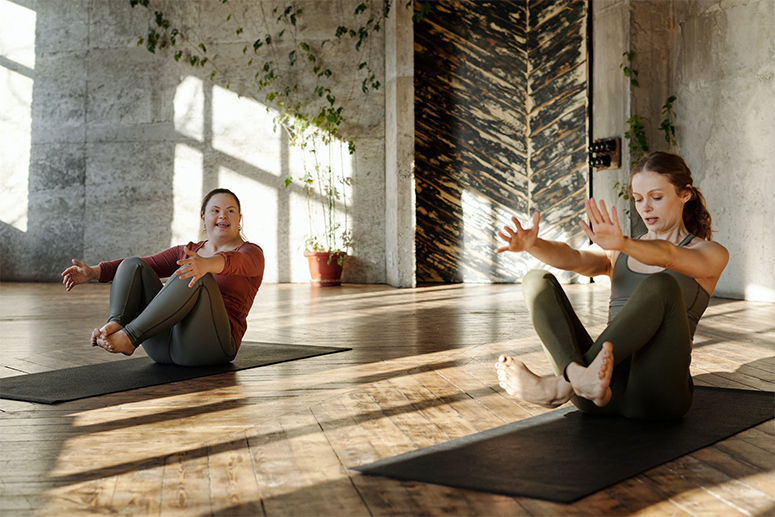Keep on keeping your distance
They say that the social or physical distancing rule was brought about by research in the 1930s, though some say that the practice existed even during the 5th century, as expressed in the Book of Leviticus and other Bible stories where the sick are isolated from others.
The American Center for Disease Control (CDC) and Prevention refers to the non-pharmaceutical intervention as a method for reducing the frequency and proximity of contact between people in order to decrease the risk of transmission of a disease.
The World Health Organization (WHO) suggested the term physical distancing as more appropriate, instead of social distancing, to emphasize that it is the physical separation that is necessary and that the social interaction can still flourish through the use of modern technology.
Physical distancing, combined with the use of a mask, good hygiene and hand washing, can effectively reduce the spread of a virus. But how much space between us and the next masked person is necessary?
Instead of keeping gyms closed, shouldn’t we talk and agree on the higher requirements to impose on us to help us survive so we can help people boost their immunity, improve their mental health, improve their sleep quality, and help them manage their weight?
The answer is affected by four factors. One, the country you live in. Two, the level of viral risk in your locality. Three, whether you are indoor or outdoor. Four, the type of activity you are engaged in.

In general, people were advised by their governments to stay at least one meter away from the next masked person. That rule was practiced in China, Denmark, France, Hong Kong, Lithuania, Singapore, and the Philippines. Visually, one meter is as long as one park bench or one guitar or one large shopping cart.
In Australia, Belgium, Greece, Germany, Italy, Netherlands, Portugal and Spain, the recommended distance is 1 ½ meters. In the United States, Canada, and the United Kingdom, the initial recommendation is two meters. If you want a visual of that, you should be able to fit the longest portion of a bed or two benches, or two shopping carts, or four office chairs between you and the next person.
Needless to say, the countries cited have transitioned from one level of COVID-19 alert to another, which can alter the prescribed gap between people. The country’s level of vaccination may also play a role in the recommendations.
The National Institute of Health (NIH), or America’s medical research agency, released its guidelines related to physical distancing, safety, and hygiene for exercise.
For outdoor spaces like parks, they recommend two meters apart with mask, but farther is safer especially without a mask.
For indoor exercise, they do not recommend body contact and team sports, and prescribe mask and daily symptom checks for indoor exercise. When face masks are not used, they recommend up to 10 meters apart.

NIH, in its safety guidelines regarding capacity in the gym, states that 10 to 15-sq.m allocation per person is ideal. That translates to a 100-sqm. space per 10 people at the minimum (Singapore also prescribes this). They also warn against places that just recirculate the air instead of maintaining a healthy air exchange. They recommend exercise goers to not use their mobile phones while working out and to sanitize the equipment they will use.
Here in the Philippines, the prescribed distance of one meter is only applicable to activities outside the gym like shopping, commuting, or dining out.
When one exercises, there is, indeed, deeper breathing involved, but experts prescribe two to three meters apart and with a mask (which has been proven safe to use while exercising). If you do the math, then that corresponds to a 10 to 15-sqm. allocation per gym user per hour.
Based on the latest protocols from the US Center for Disease Control (CDC) for gyms issued last June, they recommended locker room access to restrooms, only prohibiting the use of showers and changing areas. That’s the reason why we recommend members to hit the gym in their exercise outfit.

CDC also recommended closing water stations and water fountains and to encourage members and staff to bring their own water bottle.
The government said they prioritized the restaurants and the salons because they have more people, but may I remind them that everything is quite relative. The restaurants and salons do cater to a bigger percentage of the population so inherently they employ more people.
Instead of keeping gyms closed, shouldn’t we talk and agree on the higher requirements to impose on us to help us survive so we can help people boost their immunity, improve their mental health, improve their sleep quality, and help them manage their weight?
If that means 10 to 15 sqm. per individual, mask on at all times, and accept the vaccinated only, we in the fitness industry will gratefully take it. That will be one step in the right direction of including our dying industry in the nation’s economic revival.



